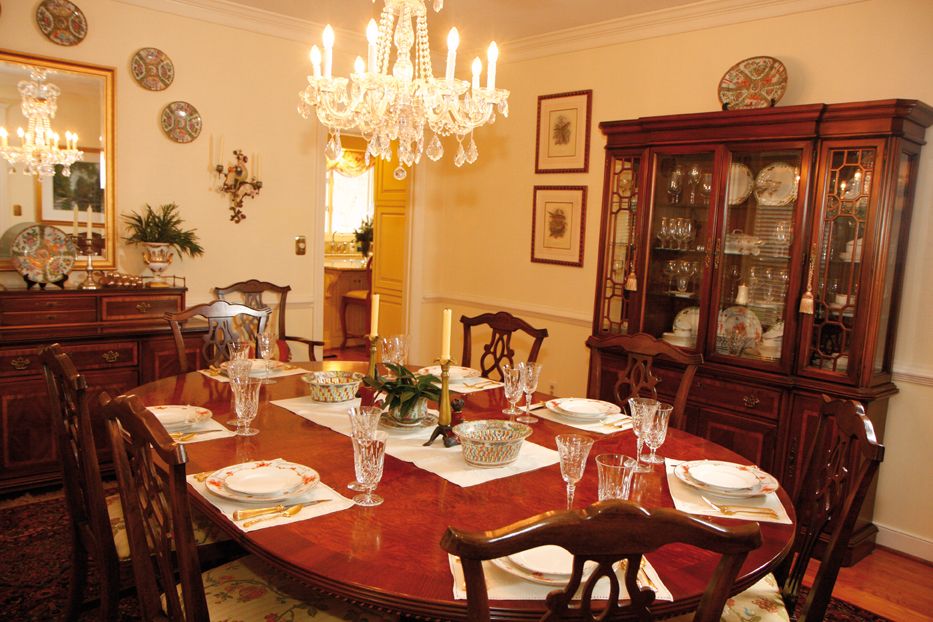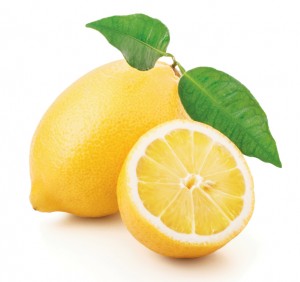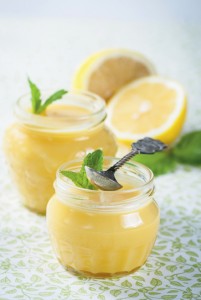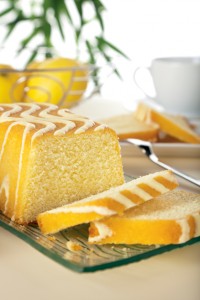Pucker Up!: Lemons Can Brighten Any Dish

 When life gives you lemons…consider yourself lucky! Thinking about lemons and all of their uses in the kitchen makes me think that they are as vital an ingredient as salt and pepper. Lemons are an irreplaceable ingredient in both sweet and savory cooking, but also can be used as a natural preservative, disinfectant, deodorizer, stain remover and wood polish!
When life gives you lemons…consider yourself lucky! Thinking about lemons and all of their uses in the kitchen makes me think that they are as vital an ingredient as salt and pepper. Lemons are an irreplaceable ingredient in both sweet and savory cooking, but also can be used as a natural preservative, disinfectant, deodorizer, stain remover and wood polish!
One of the best things about lemons is that they are available year-round. When shopping for lemons, choose fruit that is smooth, blemish-free and that seems heavy for its size. Many fruits, including lemons, may be treated with pesticides in the orchard, and with additional chemicals to reduce the chance of rot during shipping. For that reason, it’s best to buy organic lemons, especially when your recipe calls for using the peel.
Here’s a little bit of lemon lingo: lemon zest is the shiny, brightly colored outermost portion of the lemon peel and has the brightest and most intense flavor. Be careful when you’re zesting because the white pith that lies just underneath is very bitter. You’ll need to use an easy touch and a very fine grater or a microplane tool to finely shred the zest. When a recipe calls for lemon peel, this refers to peeling the top-most layer of the skin and leaving it more intact, in larger pieces. A vegetable peeler or paring knife is perfect for this task.
If you need only the lemon peel for your recipe, juice the lemon and save it in a spare ice cube tray in the freezer. If your recipe calls for zest (or peel) and juice, first grate the entire peel and then cut and juice the fruit. You’ll get more juice out of a room-temperature lemon than a cold one, although a short time (ten seconds) in the microwave will also do the trick. Roll the lemon on the counter using firm pressure to break down some of the fibers and increase the amount of juice the fruit will release.
A lemon squeezed on apples or avocados serves as a preservative and keeps them from turning brown. A half lemon dipped in salt can be used to scrub, disinfect and deodorize a cutting board. A half lemon dipped in baking soda will bring back the luster to a copper pan. And, lemon juice boiled in your microwave will get rid of cooking smells and loosen baked-on food. When life gives you lemons, don’t be a sour puss! Find something great to do with them.
There are too many great recipes that use lemons to include all of them here, but here are a few of my favorites. In addition to the recipes I’ve included, I think two fantastic summer projects for you to research and make your own are limoncello, a delicious lemon liqueur with origins in Italy, and preserved lemons, a Moroccan specialty. To make limoncello, lemon zest is steeped in vodka for a week, then mixed with simple syrup and “aged” for two more weeks to be enjoyed as an adults-only lemonade or a flavoring agent in cooking. Making preserved lemons requires pickling them in salt and their own juices for at least three weeks, and can be used in everything from tagines to salad dressing. Pucker up…and happy cooking!
 Lemon Pasta (Serves 4-6)
Lemon Pasta (Serves 4-6)
This is a versatile dish that I’ve been making for 20 years. It’s a great side dish (serves 6), or add 2 pounds of shelled shrimp tossed with olive oil, salt and pepper and roasted at 400 degrees for 6 minutes to serve it as an entrée.
4 tablespoons butter
1 cup cream
½ cup fresh lemon juice
Grated peel of 3 lemons
Your favorite pasta, prepared according to package directions
½ cup grated Parmesan cheese
½ cup chopped flat leaf parsley
Heat butter and cream in a skillet until cream starts to boil. Add lemon juice and peel. Reduce by half, stirring constantly. Cook pasta in well-salted water and drain. Add pasta to the sauce and toss with cheese and parsley. Add roasted shrimp prior to serving, if desired.
 Eton Mess (serves six)
Eton Mess (serves six)
This is my take on a traditional British dessert! I love the soft and crunchy textures, and the sweet and tart flavors.
4 large egg whites
1 cup sugar
¾ cup heavy cream
3 tablespoons powdered sugar
1 teaspoon vanilla
1 pint berries (strawberries, blackberries or both)
½ cup lemon curd (see next recipe)
First, make the meringue: Preheat the oven to 250. Line a baking sheet with parchment. Beat the egg whites at high speed with a mixer until they hold soft peaks. Add the sugar and continue beating until the eggs hold stiff peaks. Plop the mixture by large spoonfuls on the parchment, smoothing the tops so they stand about an inch high. Bake in the preheated oven for 90 minutes. Turn off the oven and leave the meringues inside until the oven is cool (about an additional 90 minutes). Peel the meringues off the parchment and crumble into bite-sized pieces.
Whip the cream with powdered sugar and vanilla in a chilled bowl.
Set aside 6 berries for garnish. Smash the remaining berries with a fork.
In six wine or other clear glasses, layer the crumbled meringues, a spoonful of lemon curd, a spoonful of berries and a dollop of whipped cream, making at least two layers. Top each dessert with a whole berry. Can be made up to five hours in advance.
 Lemon Curd (makes 2 cups)
Lemon Curd (makes 2 cups)
The essence of lemon, this delicious lemon spread is a great thing to have on hand. Use it to fill a premade tart shell or as a filling in your favorite cake.
3 eggs
½ cup sugar
Finely grated zest of 3 lemons
½ cup fresh lemon juice (3-4 lemons)
6 tablespoons butter, cut into 6 pieces at room temperature
Whisk the eggs, sugar, zest and juice in a two-quart non-reactive saucepan. Add the butter and cook over low heat, whisking constantly, until the butter has melted and the mixture has thickened. Pass through a fine mesh strainer into a bowl, and press a sheet of plastic wrap on the surface of the curd. Keeps up to two weeks.
 Lemon Tea Cake (makes a one-pound loaf, about 8 slices)
Lemon Tea Cake (makes a one-pound loaf, about 8 slices)
We eat this for breakfast and as dessert. It would be a company-worthy dessert with a dollop of lemon curd and fresh whipped cream. The glaze is optional.
Butter and flour for preparing pan
3 tablespoons lemon zest
1 cup sugar
1 ½ cups flour
2 teaspoons baking powder
½ teaspoon salt
¾ cup Greek yogurt (full fat is preferable)
½ cup canola oil
2 eggs
½ teaspoon vanilla
Glaze: ¼ cup lemon or orange marmalade 1 teaspoon water
Lightly butter a one-pound loaf pan then dust with flour, tapping out excess. Using your hands, rub lemon zest into sugar until the sugar is fragrant. Sift flour, baking powder and salt together and set aside.
Whisk remaining ingredients together.
Combine wet ingredients with sugar. Add dry ingredients and blend just until combined. Pour into prepared pan and bake until the loaf is golden brown and springs back when poked in the middle. Let cool 15 minutes then turn out of pan and cool completely.
Optional glaze: melt marmalade and water in a small saucepan until melted. Pour over cake. Let dry for at least an hour.






